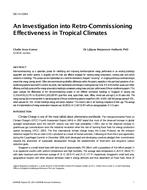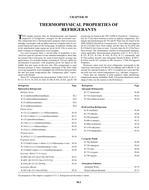Outlines practical issues involved in the design of EHD-enhanced evaporators and forms part of the transfer of fundamental EHD research findings to the wider heat transfer engineering community. The influence of electrode and heat transfer surface geometries on the electric field distribution at the heat transfer surface is considered. Recent research on EHD enhancement of boiling is reviewed, and the EHD mechanisms involved are explained in terms of the electrical body forces acting on the working fluids. EHD evaporator performance prediction is discussed, and a data correlation method is presented for simple geometries. Reference is made to practical considerations of incorporating high-voltage electrode systems in heat exchangers and possible operational issues such as fouling.
KEYWORDS: designing, heat flow, evaporators, surfaces, geometry, research, boiling, performance, calculating, high voltage, electrodes, heat exchangers, fouling, copper, iron
Citation: Symposium Papers, Baltimore, MD, 1992
Product Details
- Published:
- 1992
- File Size:
- 1 file , 1.3 MB
- Product Code(s):
- D-17875


